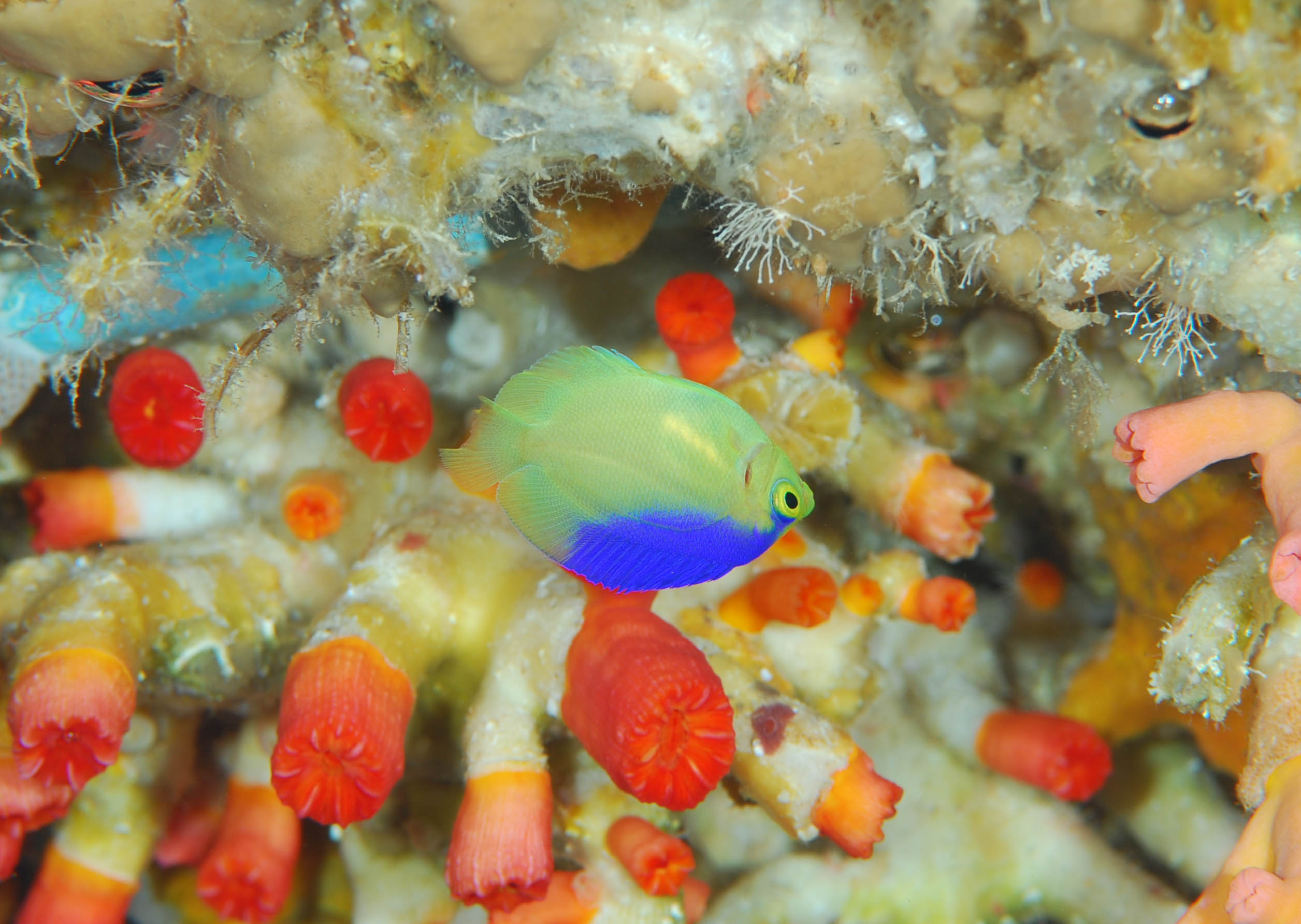Fabled angelfish of the deep, with a mysterious ectoplasmic glow. Centropyge colini is a dwarf angel riddled with mystique and inexplicable beauty. Of the various deepwater dwarf angelfish known to science, only a few species fall readily into the hands of aquarists. The preeminent Paracentropyge boylei and Centropyge narcosis is available, although burning a large hole in your wallet is a necessary prerequisite. Centropyge abei is only but a lucid dream, so that lust for a deepwater angel can only be filled by the equally, if not more furtive Centropyge colini.

C. colini was first known in the early 70’s from Cocos-Keeling. In 1980, it was discovered in Guam, extending the known range of this secretive species by 5,900km. Since then, C. colini has enjoyed a further extension of its range, and is now known in many parts of the Western Pacific including the Spratly Islands, Palau, Papua New Guinea, Indonesia, Marshall Islands, Fiji and the Philippines.
C. colini is a deepwater angelfish, and is not usually found shallower than 60ft. They however, only start becoming more apparent at depths of 120ft and deeper, and can even be found in depths exceeding 300ft. In the wild, C. colini enjoys swimming upside down, in steep drop-offs replete with large cracks. It is not uncommon to find this species swimming sideways, or inverted amongst Tubastrea corals.

Unlike most reef inhabiting Centropyge, a typical habitat for C. colini usually includes some sort of large underwater cavern or a steep vertical drop off, replete with a labyrinth of cracks and calcareous catacombs. Although usually observed singly, they are haremic and sometimes share a large crack or cave with up to three or more individuals.
Furtive, shy and very secretive, they are rarely observed by conventional divers and likewise, the aquarium that houses it should emulate a habitat which allows for the same behaviour. A peaceful tank with no competitive or overly boisterous fish is a must for a new Colin’s angelfish. The aqua scape should replicate its natural habitat, with plenty of hiding places for the fish to hang out. Providing large overhangs will allow the fish to hang upside down as they normally do in the wild. Natural food sources such as live rock, algae growth and even live coral will help prevent it from starving until it decides to eat prepared food.

C. colini has a coloration and body shape that is unique amongst its peers. The greenish-yellow body with a bright purple-blue back is an iconic trademark unique to this species. Apart from the high body profile, C. colini also has particularly large and long dorsal spines that pay homage to C. narcosis, to which it is probably most closely related to.

A delicate fish with a flare for mystery, C. colini is well worth the initial mollycoddle. A difficult and sensitive fish, but a very rewarding species once acclimated. How many of you have successfully kept C. colini? What are some of your personal experiences with this fish? Let us known in the comments below.



